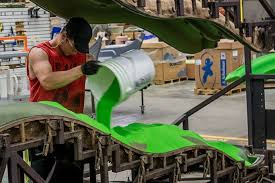Plastics rotomolding, after considered a niche market producing process, has changed significantly over the years, due to breakthroughs in components, modern technology, and method search engine optimization. Here’s a closer look at a few of the the latest improvements shaping the way forward for rotomolding:
Superior Materials:
The creation of new thermoplastic resins and artificial additives has broadened all the different resources available for rotomolding. Substantial-functionality polymers with improved mechanised properties, UV amount of resistance, and flame retardancy have become popular, opening up possibilities for apps in stressful surroundings.
Automation and Robotics:
Automation and robotics have revolutionized the rotomolding method, improving performance, persistence, and efficiency. Automatic systems for fungus reloading, warming, and cooling down enable faster routine times and minimize effort charges. Robotics can also be useful for cutting, completing, and quality control, making sure precise and repeatable effects.
three dimensional Printing and Fast Prototyping:
The incorporation of 3 dimensional stamping and speedy prototyping systems has accelerated this product development pattern for rotomolded parts. Prototypes could be quickly made employing ingredient producing tactics, enabling developers to test and polish their styles before purchasing tooling.
Simulator Application:
Advanced simulator computer software makes it possible for technical engineers to maximize the rotomolding process virtually, guessing fabric movement, heat distribution, and part shrinkage. By simulating diverse mold designs and processing guidelines, suppliers can reduce disorders, lessen routine occasions, and increase total portion high quality.
Environmentally friendly Methods:
With increasing problems about ecological sustainability, the rotomolding market is adopting eco-friendly procedures. Re-cycled supplies, alternative energy options, and shut-loop recycling systems are integrated to lower the co2 footprint in the producing approach. In addition, naturally degradable and compostable resins are being investigated as option supplies for rotomolding.
Bottom line:
The way forward for Plastics Rotomolding appears encouraging, motivated by developments in supplies, automation, 3 dimensional publishing, simulation computer software, and sustainability. As producers still innovate and maximize the process, rotomolding will continue to be a aggressive and sustainable production solution for a wide array of sectors.
